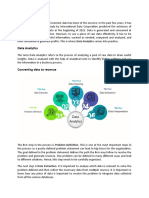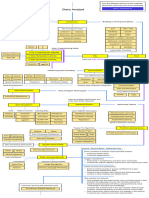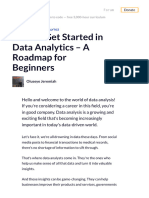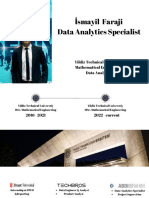0% found this document useful (0 votes)
35 views16 pagesData Analytics Notes
The document provides an overview of Data Analytics, detailing its processes, types, core concepts, and tools. It covers essential topics such as data collection, cleaning, exploratory data analysis, visualization, and machine learning applications. Additionally, it outlines career paths, learning resources, and tips for achieving proficiency in the field.
Uploaded by
Thanushree VCopyright
© © All Rights Reserved
We take content rights seriously. If you suspect this is your content, claim it here.
Available Formats
Download as PPTX, PDF, TXT or read online on Scribd
0% found this document useful (0 votes)
35 views16 pagesData Analytics Notes
The document provides an overview of Data Analytics, detailing its processes, types, core concepts, and tools. It covers essential topics such as data collection, cleaning, exploratory data analysis, visualization, and machine learning applications. Additionally, it outlines career paths, learning resources, and tips for achieving proficiency in the field.
Uploaded by
Thanushree VCopyright
© © All Rights Reserved
We take content rights seriously. If you suspect this is your content, claim it here.
Available Formats
Download as PPTX, PDF, TXT or read online on Scribd
/ 16





































































